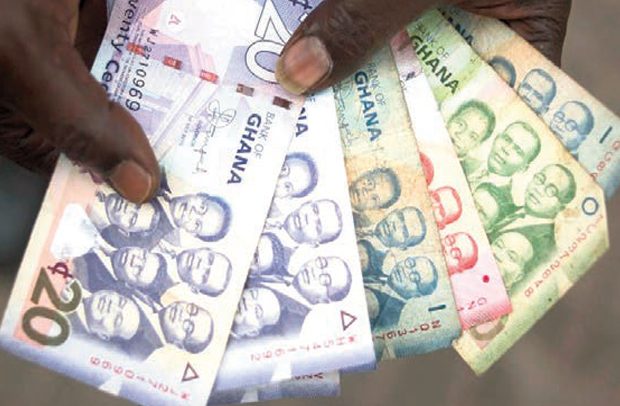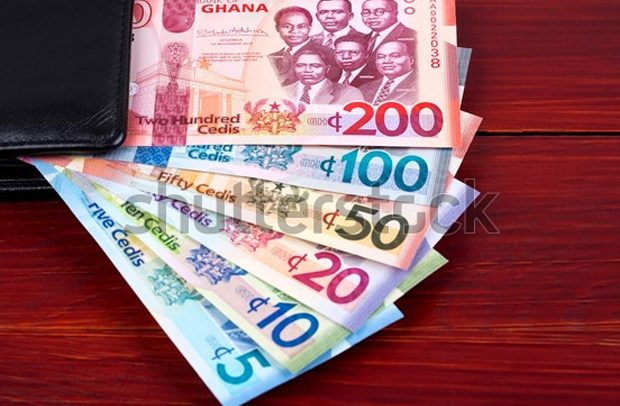
By Joshua Worlasi AMLANU
The Bank of Ghana has downplayed concerns that the recent appreciation of the cedi could undermine export competitiveness, saying the gains are supported by economic fundamentals and are helping to drive down inflation.
Following its 124th Monetary Policy Committee (MPC) meeting, the central bank emphasised that the cedi’s strength, while notable, remains within acceptable bounds and is not resulting in a real appreciation that would threaten the country’s trade position.
“We don’t have that problem of real appreciation that will impact adversely on our competitiveness,” Governor Dr. Johnson Pandit Asiama said at a press briefing, noting that the MPC had conducted a thorough assessment of the currency’s movement in both nominal and real terms.
In 2025, the Ghanaian cedi reversed earlier depreciation trends with strong gains against the U.S. dollar (24.1 percent), the British pound (16.2 percent) and the euro (14.1 percent), supported by a robust trade surplus, higher foreign reserves and a weaker U.S. dollar index.
The real effective exchange rate fell from 156.3 in October 2024 to 136.4 in April 2025, signalling improved competitiveness and supporting export performance. Gross international reserves rose to US$10.17billion, while net international reserves reached US$7.26billion, reflecting effective foreign exchange management through interventions and stronger export earnings.
The cedi’s outperformance relative to the declining emerging market currency index highlights Ghana-specific tailwinds, notably a surge in gold and cocoa exports.
The central bank maintains that its primary concern is avoiding persistent real appreciation—a scenario in which the cedi’s gains outpace inflation-adjusted fundamentals, potentially eroding export competitiveness and derailing the economic recovery.
For now, the bank sees no evidence of such a distortion. “The important thing here is to ensure that in real terms, the cedi is not appreciating consistently. And we think that where we are now, we don’t have that problem,” Dr. Asiama said.
The bank reiterated that it does not target a fixed exchange rate but operates a managed float regime, allowing for market-based fluctuations with interventions limited to addressing disorderly market conditions.
“As always, the exchange rate is an endogenous variable—it has to fluctuate,” the governor said. “The important thing is that the swings are not excessive.”
Officials described recent exchange rate movements as consistent with Ghana’s macroeconomic stabilisation path. After years of volatility and external shocks, the central bank is keen to present the cedi’s strength as a reflection of restored policy credibility and improving fundamentals.
“From where we are now, we believe that both in nominal terms and in real terms, the movements in the cedi can be contained; those that are consistent with the macroeconomic path, ” the governor said.
That path includes fiscal consolidation, tighter monetary conditions and a commitment to structural reforms under Ghana’s International Monetary Fund-supported programme. The bank argues these efforts are combining to foster a more durable exchange rate environment.
Market-driven gains
The cedi has appreciated steadily this year, buoyed by a mix of tight monetary policy, rising foreign inflows and a stronger current account position. The bank insists the gains are market-driven, not the result of artificial interventions.
Explaining further, he said: “We are not using our reserves to intervene in the market. The appreciation you are seeing is driven by our economic policy, the stance of monetary policy and international flows such as remittances and commodity exports like gold and cocoa”.
Indeed, Ghana’s external sector has been performing strongly. The trade surplus is widening, and the current account remains in surplus, supporting the cedi. In contrast to previous episodes of appreciation that were short-lived or reliant on central bank support, this trend appears more resilient.
Anchor for disinflation
The stronger cedi is also being positioned as a tool in the central bank’s disinflation strategy. Inflation fell to 21.2 percent in April from over 54 percent in late 2022, with the appreciation helping to curb imported inflation by making dollar-priced goods cheaper.
“The appreciation in the cedi is also driving this inflation path,” Dr. Asiama noted.
He reiterated the bank’s commitment to its end-year inflation target of 11.9 percent, suggesting that the current exchange rate trajectory supports, rather than undermines, that goal.
While some observers have described the target as ambitious, policy-makers remain confident that continued currency stability, easing food prices and tighter credit conditions will help contain inflationary pressures.
The post BoG dismisses export fears as cedi rallies appeared first on The Business & Financial Times.
Read Full Story














Facebook
Twitter
Pinterest
Instagram
Google+
YouTube
LinkedIn
RSS